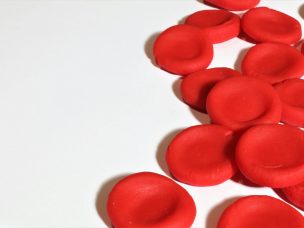In this MD Newsline exclusive interview with pediatric hematologist/oncologist Dr. Ahmar Zaidi, we discuss how the COVID-19 pandemic has impacted sickle cell disease care and sickle cell disease disparities.
MD Newsline:
How has the COVID-19 pandemic impacted sickle cell disease care?
Dr. Ahmar Zaidi:
“For us as hematologists, early during the pandemic, we were not sure how this virus was going to wreak havoc on our patients. The fact of the matter is that hematological conditions don’t stop happening because there’s a pandemic, right? If you have sickle cell disease, you’re going to keep having sickle cell disease, and that’s going to require care.
One of the things we were seeing early on is our emergency room utilization was way down. I think that was something that was being seen all over the country. And part of that was patients were saying they were in pain and they needed to go to the ER, but they were too scared, they didn’t want to get COVID, so they stayed home. So we were seeing patients show up a little bit later in the course of their illness. They were showing up a little bit sicker in the course of their illness.
You know, one really good thing that’s come from the pandemic is innovation. Right? Innovation in how we deliver healthcare. Innovation in how we deliver information. The pandemic has pushed a lot of us who may have been close to getting telehealth becoming a robust service at our institutions to something that’s deployable, that’s usable, that’s allowed us to reach patients that we otherwise were having trouble reaching. That’s really been a sort of good consequence of the pandemic.
The other thing has been how we get information out. For me, I work very hard on a podcast that we have for sickle cell disease that I try to get to my patients just because we have fewer touchpoints with them now. So I think there’s also been a little bit of good that’s come out of this pandemic.”
MD Newsline:
Do you think sickle cell disease disparities have worsened during the COVID-19 pandemic?
Dr. Ahmar Zaidi:
“It’s interesting, right, because as the COVID-19 death rates were being calculated, the media was in a buzz about how COVID-19 was affecting the Black population disproportionately. They were shocked about this situation as if it were news. And the sickle cell disease doctors were sort of like, ‘yeah, we’ve been telling you that this was a problem for quite some time.’
Have sickle cell disease disparities worsened during the pandemic? You know, I’ll say that I think for a lot of reasons there’s a new light on racial health disparities right now, unfortunately coming at the cost of the killing of Black individuals in the community. We have this spotlight that I think is causing institutional changes where people are a little bit more in tune with race and bias. I think that’s been helpful that people are wanting to have this conversation a little bit more openly. Right?
It’s not a conversation that’s easy to have, but I think that’s a huge stepping stone in the way of getting to a path towards equity and reducing some of the bias that patients perceive.
Now, have sickle cell disease disparities worsened during the pandemic? Certainly, the disparities have worsened, right? Because the people who struggle with basic necessities will continue to struggle, and those problems will be amplified. You know, fewer jobs and figuring out how to have your kids taken care of when they’re not in school, right?
It’s all of these things that compound. So certainly disparities have worsened, and we know that stressful situations have real biologic consequences in sickle cell disease. So I certainly have seen some of those disparities play out over the last year and a half.”
Responses have been condensed and lightly edited.










